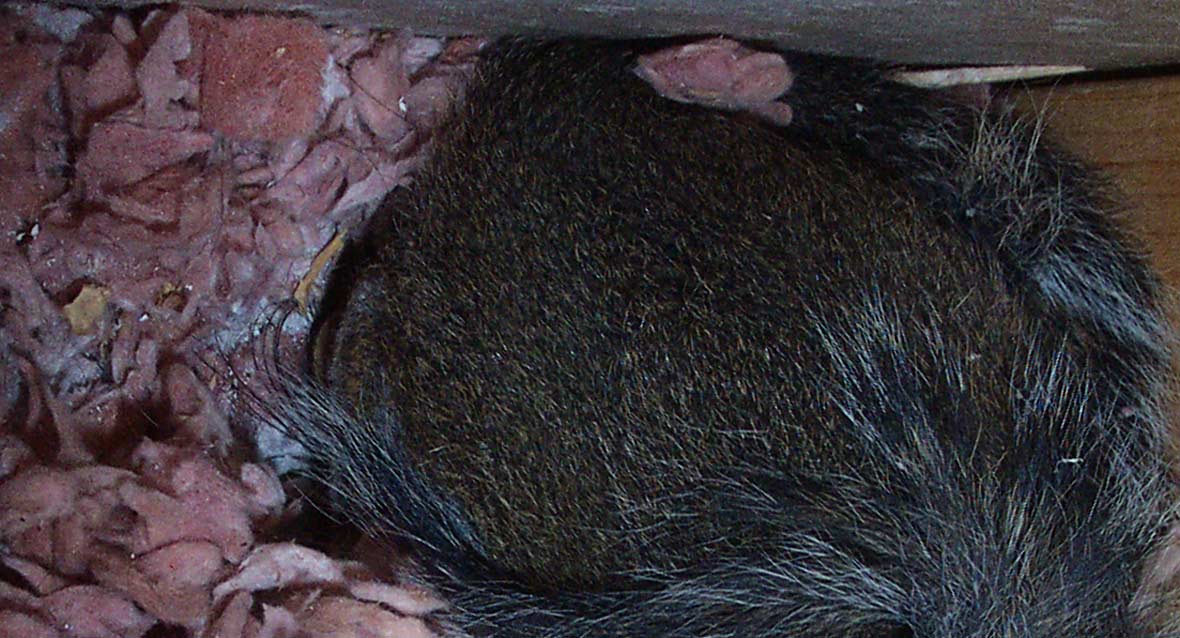- USA Wildlife Removal Education Guide - Dead Animal in the Wall?
Dead Animal in the Wall?

Sometimes though, they fall in accidentally and can’t get out because they’re injured, lack the necessary climbing ability or simply find the walls too slippery. Stranded and with no way to escape, they often die and inevitably begin to decompose, generating a nasty order and attracting insects and other vermin.
The interior construction of walls makes them hard for the homeowner to access and even if the exact position of the dead animal is sniffed out, it’s usually difficult to get at from above. Moreover, if the animal has been dead for any length of time, it may not only be hard to remove, but once out, it can leave residual fluids and odors that not only smell bad, but also continue to sustain the insects that have been attracted.
Step one, then, is to find the body. The most obvious means is to sniff around the suspected location and identify where the odor is the strongest. Also, depending on it state of decomposition, there may be fluids seeping out from the base of the wall.
You may also get a clue from the presence of flies and gnats that are attracted to the site of the decomposing body. If you have a general idea of its location, you can also drill holes around the site to identify where the odor is strongest.
Once you determine the dead animal’s location you need to access it. Usually, this means cutting a hole in the wall and sometimes, digging though insulation. When going through the wall, make the cut large enough to permit relatively easy access, keeping in mind that wall construction provides only 16 inches of width between studs. Height of the cut is generally not an issue but it is important to be aware of any wiring that may be present. The wallboard should be cut an angle so that it can be reinstalled easily once the job has been completed.
Once the animal has been removed, place the carcass in a plastic bag for disposal. Clean up the site, preferably using an enzyme-based cleaning product that will destroy any remaining animal waste and suppress any residual odors. Replace the cutout using wallboard nails to refasten it to the studs, spackle the edges to recreate a smooth wall surface and repaint it.
Finally, dispose of the carcass and air-out the room. Then try to find where and why the animal fell into the wall and if you can, close it off.
If you need help, we service the entire USA! Click here for a wildlife removal specialist in your town!
Go back to the main Wild Animal Removal page for more information about Dead Animal in the Wall?.

